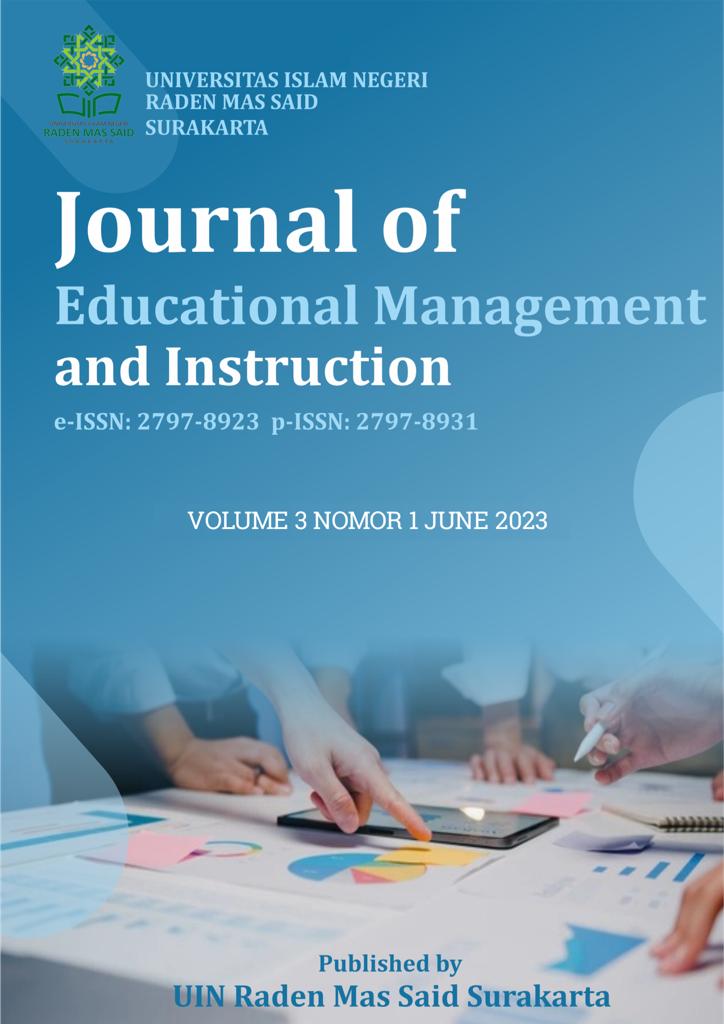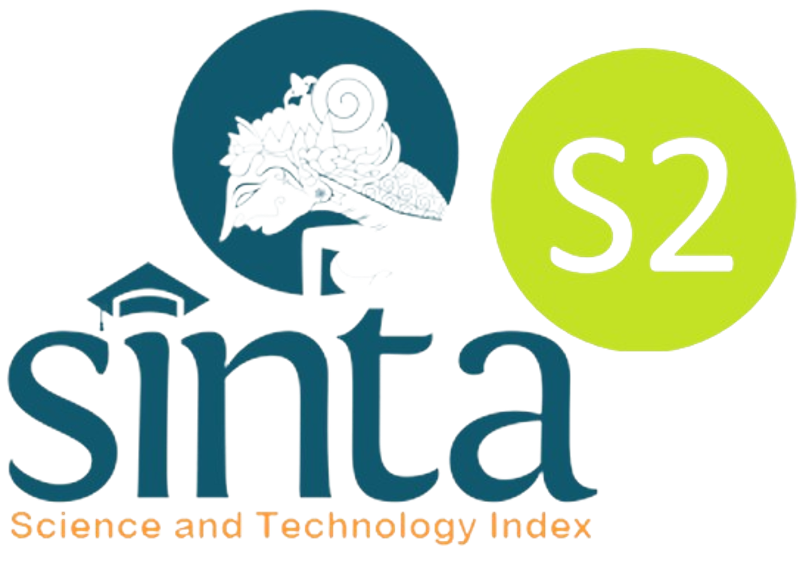Project based learning in teaching translation: Effect on students’ performance
DOI:
https://doi.org/10.22515/jemin.v3i1.6903Keywords:
English language teaching, project-based learning, translationAbstract
The debate among researchers regarding the best method for teaching translation remains ongoing. With various approaches available, it is crucial to empirically assess their effectiveness in different educational settings. Therefore, this study aims to address the lack of empirical evidence regarding the effectiveness of Project Based Learning (PjBL) in teaching translation. The research involved thirty-five Indonesian EFL students enrolled in the Translation Entrepreneurship course at UIN Raden Mas Said Surakarta, Indonesia. Classroom action research was conducted over eight meetings and two cycles. Pre-test and post-test data from cycle 1 and cycle 2 were analyzed using paired sample t-test in SPSS. The results indicated a significant improvement in students' translation performance (p-value 0.000 < 0.05) after using the PjBL method. In conclusion, this study demonstrated that PjBL effectively enhances students' translation skills, offering valuable insights for teachers and educational institutions to consider it as an alternative method for teaching translation.
Downloads
References
Alkhatnai, M. (2017). Teaching Translation Using Project-Based-Learning: Saudi Translation Students Perspectives. AWEJ for Translation & Literary Studies, 1(4), 83-94. http://dx.doi.org/10.2139/ssrn.3068489.
Azwati, A., Setiawan, S., & Purwati, O. (2022). EFL postgraduate students’ critical thinking beliefs and their ability in writing research methodology. Celtic: A Journal of Culture, English Language Teaching, Literature and Linguistics, 9(1), 39-52. https://ejournal.umm.ac.id/index.php/celtic/article/view/20166
Beeby, A. (2017). Choosing an empirical-experimental model for investigating translation competence: The PACTE model. In Intercultural Faultlines: Research Models in Translation Studies I: Textual and Cognitive Aspects, page 43–55. https://www.taylorfrancis.com/chapters/edit/10.4324/9781315759951-4/choosing-empirical-experimental-model-investigating-translation-competence-allison-beeby
Beeby, A., Fernández Rodríguez, M., Fox, O., Kuznik, A., Neunzig, W., Rodríguez-Inés, P., Romero Ramos, L., & Wimmer, S. (2011). Results of the validation of the PACTE Translation Competence model: Translation project and dynamic translation index. Cognitive Explorations of Translation, page 30–56. https://doi.org/10.1075/btl.94.22pac
Gao, L. (2019). A two-dimensional hypothetical model for legal translation competence enhancement. Current Trends in Translation Teaching and Learning E, 6, 269-305. https://benjamins.com/online/etsb/publications/33205
Hartono, R. (2015). Teaching translation through the interactive web. Language Circle: Journal of Language and Literature, 9(2), 129-140. https://doi.org/10.15294/lc.v9i2.3703
Hurtado Albir, A. (2019). Evolution of the Efficacy of the Translation Process in Translation Competence Acquisition. Meta: Journal Des Traducteurs/Meta: Translators’ Journal, 64(1), 242–265. https://www.erudit.org/fr/
Izzah, N., & Diana, L. (2021). Beyond the implementation of project-based assessment in ELT: benefits, challenges, and teachers' strategies. Celtic: A Journal of Culture, English Language Teaching, Literature and Linguistics, 8(2), 140-151. https://ejournal.umm.ac.id/index.php/celtic/article/view/18208
Kiraly, D. (2005). Project-based learning: A case for situated translation. Meta: Journal Des Traducteurs/Meta: Translators’ Journal, 50(4), 1098–1111. https://id.erudit.org/iderudit/012063ar
Kiraly, D. C. (2015). Occasioning translator competence: Moving beyond social constructivism toward a postmodern alternative to instructionism. Translation and Interpreting Studies. The Journal of the American Translation and Interpreting Studies Association, 10(1), 8–32. https://www.jbe-platform.com/content/journals/10.1075/tis.10.1.02kir
Kokotsaki, D., Menzies, V., & Wiggins, A. (2016). Project-based learning: A review of the literature. Improving Schools, 19(3), 267–277. https://doi.org/10.1177/1365480216659733
Latief, M. A. (2009). Classroom Action Research in Language Learning. Malang: State University of Malang.
Lee, E. T. (2012). Collaborative learning in translating a travel guide: A case study. Translation Journal, 16(3), 23–34. https://translationjournal.net/journal/61travel.htm
Lee, S.-M. (2020). The impact of using machine translation on EFL students’ writing. Computer Assisted Language Learning, 33(3), 157–175. https://doi.org/10.1080/09588221.2018.1553186
Li, X. (2018). International research on translation teaching: A review (2008-2017). Theory and Practice in Language Studies, 8(6), 656–664.
Mekheimer, M. A. A. (2012). Assessing aptitude and attitude development upon teaching translation skills using LMS and an online dictionary. Calico Journal, 29(2), 321–340. https://doi.org/10.11139/cj.29.2.321-340
Moghaddas, M., & Khoshsaligheh, M. (2019). Implementing project-based learning in a Persian translation class: a mixed-methods study. The Interpreter and Translator Trainer, 13(2), 190–209. https://doi.org/10.1080/1750399X.2018.1564542
Muam, A. (2017). Project Based Learning di Kelas Terjemahan Bahasa Asing untuk Pendidikan Vokasional. JLA (Jurnal Lingua Applicata), 1(1), 17–35. htpps://doi.org/10.22146/jla.28315
Nababan, M., & Nuraeni, A. (2012). Pengembangan model penilaian kualitas terjemahan. Surakarta: Universitas Muhammadiyah Surakarta
Novitasari, F., & Ardi, P. (2016). Developing a teaching methodology of translation course: A cooperative learning model for English department students. Indonesian Journal of English Language Studies (IJELS), 2(1), 76-90. https://doi.org/10.24071/ijels.v2i1.352
Purohman, P. S. (2018). Classroom Action Research Alternative Research Activity for Teachers. Research Gate.
Redjeki, G. P. D., & Hapsari, A. (2022). EFL undergraduate students’ online self-regulated learning strategies during Covid-19 pandemic. Celtic : A Journal of Culture, English Language Teaching, Literature and Linguistics, 9(1), 82–96. https://ejournal.umm.ac.id/index.php/celtic/article/view/21066
Tsai, S.-C. (2019). Using google translate in EFL drafts: a preliminary investigation. Computer Assisted Language Learning, 32(5–6), 510–526. https://doi.org/10.1080/09588221.2018.1527361
Wang, H. (2013). Classroom Interactions in a Cooperative Translation Task. International Journal of Applied Linguistics and English Literature, 2(2), 53–58. https://doi.org/10.7575/aiac.ijalel.v.2n.2p.53
Yuliasri, I. (2012). Applicability of cooperative learning techniques in different classroom contexts. UNNES International Conference on ELTLT, page 44–53.
Zhang, L. (2016). Business English translation strategies in the perspective of Skopos: In the case of advertisement translation. Open Journal of Modern Linguistics, 6(03), 243-246. http://doi.dx.10.4236/ojml.2016.63026
Zheng, J. (2017). Teaching Business Translation-A Project-based Approach. 3rd Annual International Conference on Management, Economics, and Social Development (ICMESD 17), page 178-183.
Downloads
Submitted
Accepted
Published
How to Cite
Issue
Section
License
Copyright (c) 2023 Woro Retnaningsih

This work is licensed under a Creative Commons Attribution-NonCommercial 4.0 International License.
Copyright
Copyright aims to protect the specific way the article has been written to describe an experiment and the results. Journal of Educational Management and Instruction is committed to its authors to protect and defend their work and their reputation and takes allegations of infringement, plagiarism, ethical disputes, and fraud very seriously. Automotive Experiences is published under the terms of the Attribution-NonCommercial 4.0 International (CC BY-NC 4.0). Authors retain copyright and grant the journal right of first publication (online and print) with the work simultaneously. We use the restrictive license (non-commercial) as follows:
BY (attribution): Users are allowed to share, distribute and redistribute the published article in any medium or format, with an identification of the authors and its initial publication in this journal. Authors are encouraged to post and distribute their articles immediately after publication (e.g., institutional or public repositories, personal websites). Authors are allowed to enter into additional contractual arrangements for the non-exclusive distribution of the published and an acknowledgment of its initial publication in this journal.
NC (non-commercial): Users are not allowed to use the article commercially without the permission of the authors. Authors agree explicitly that the published article is indexed worldwide in databases, repositories and indexation services, even if these services operate on a commercial basis. Authors grant Journal of Educational Management and Instruction explicit the right to include the published articles in databases, repositories and indexation services.
License
License to Publish
The non-commercial use of the article will be governed by the Attribution-NonCommercial 4.0 International (CC BY-NC 4.0). The author hereby grants Journal of Educational Management and Instruction an exclusive publishing and distribution license in the manuscript include tables, illustrations or other material submitted for publication as part of the manuscript (the “Articleâ€) in print, electronic and all other media (whether now known or later developed), in any form, in all languages, throughout the world, for the full term of copyright, and the right to license others to do the same, effective when the article is accepted for publication. This license includes the right to enforce the rights granted hereunder against third parties.
Author's Warranties
The author warrants that the article is original, written by stated author/s, has not been published before, contains no unlawful statements, does not infringe the rights of others, is subject to copyright that is vested exclusively in the author and free of any third party rights, and that any necessary written permissions to quote from other sources have been obtained by the author(s).
User Rights
Under the Creative Commons Attribution-Non Commercial 4.0 International (CC BY-NC 4.0) license, the author(s) and users are free to share (copy and redistribute the material in any medium or format) and adapt (remix, transform, and build upon the material). Users must give appropriate credit, provide a link to the license, and indicate if changes were made.
Rights of Authors
Authors retain the following rights:
- Copyright, and other proprietary rights relating to the article, such as patent rights,
- The right to use the substance of the article in future own works, including lectures and books,
- The right to reproduce the article for own purposes, provided the copies are not offered for sale, and
- The right to self-archive the article.
Co-authorship
If the article was prepared jointly with other authors, the signatory of this form warrants that he/she has been authorized by all co-authors to sign this agreement on their behalf, and agrees to inform his/her co-authors of the terms of this agreement.

























